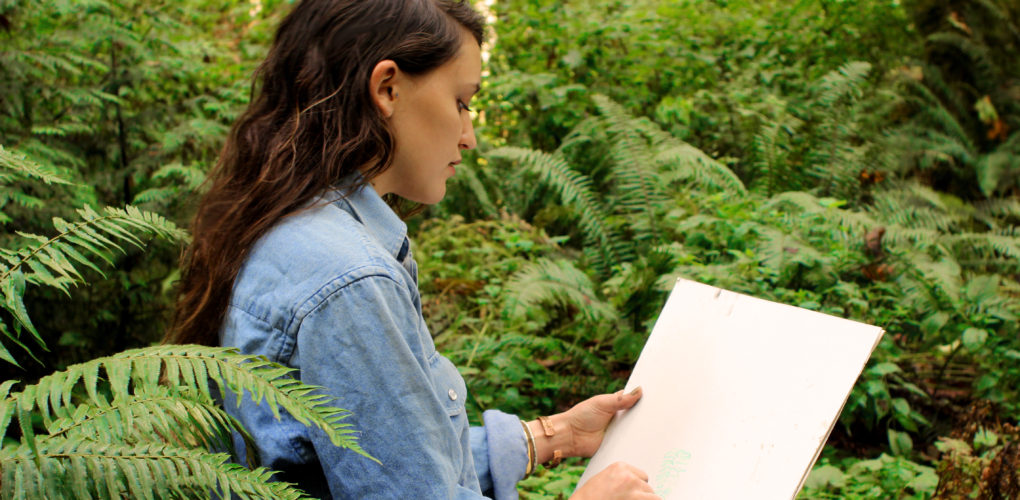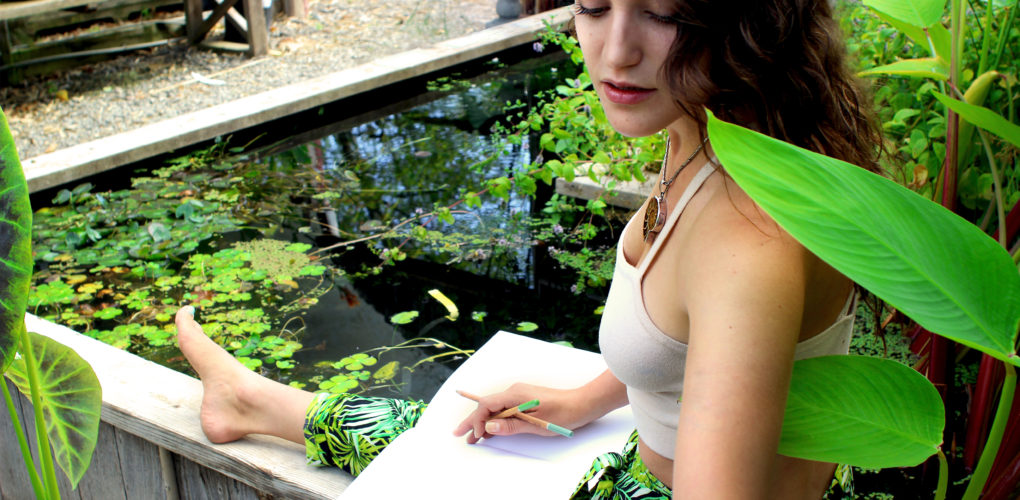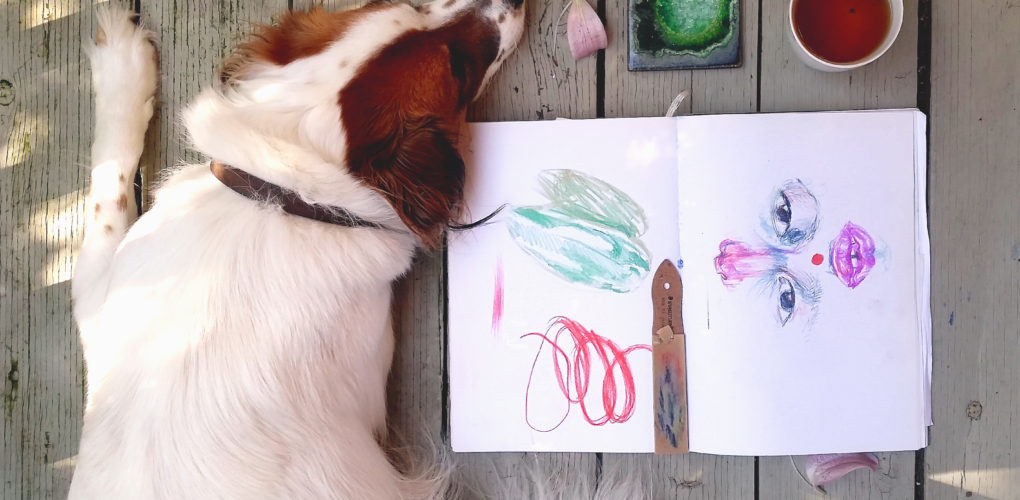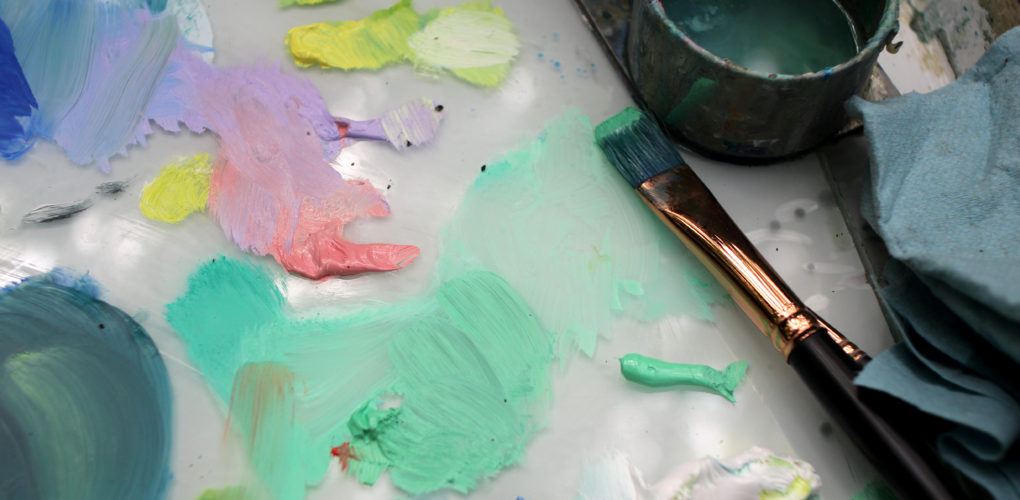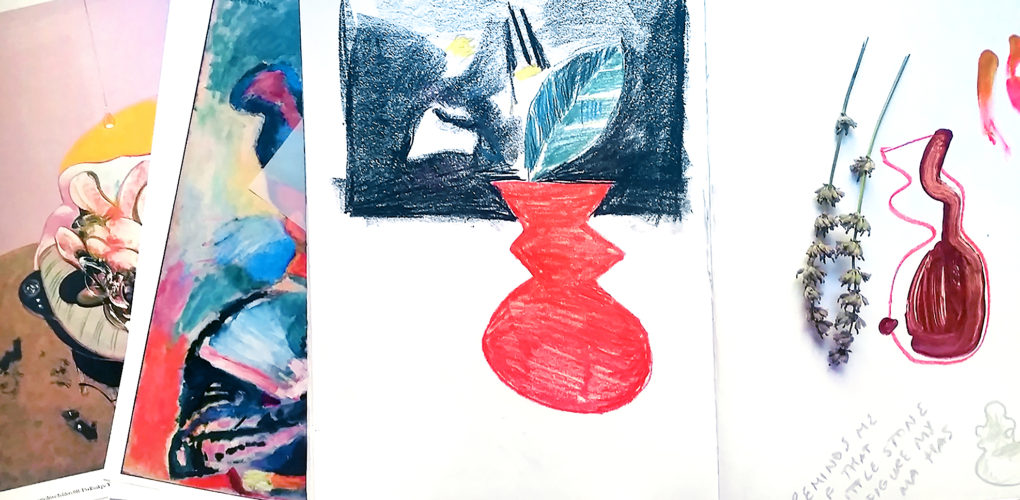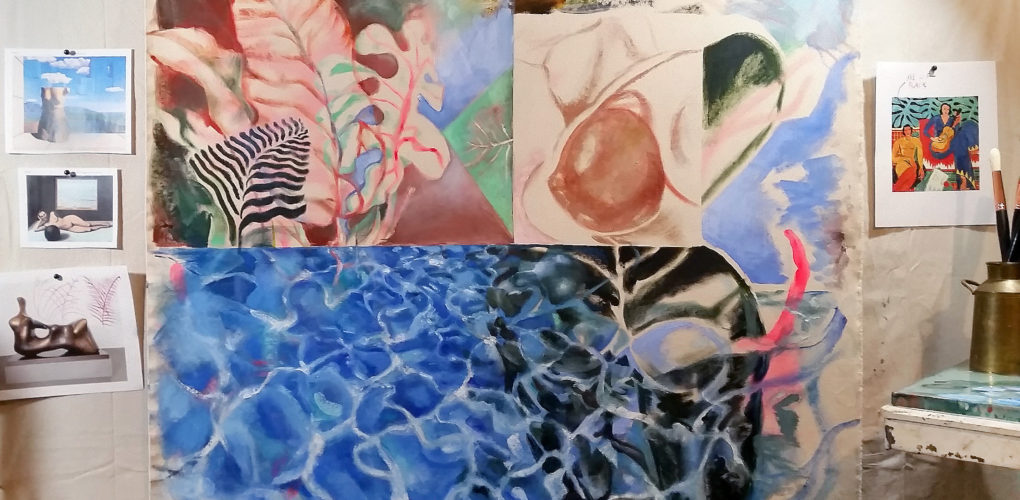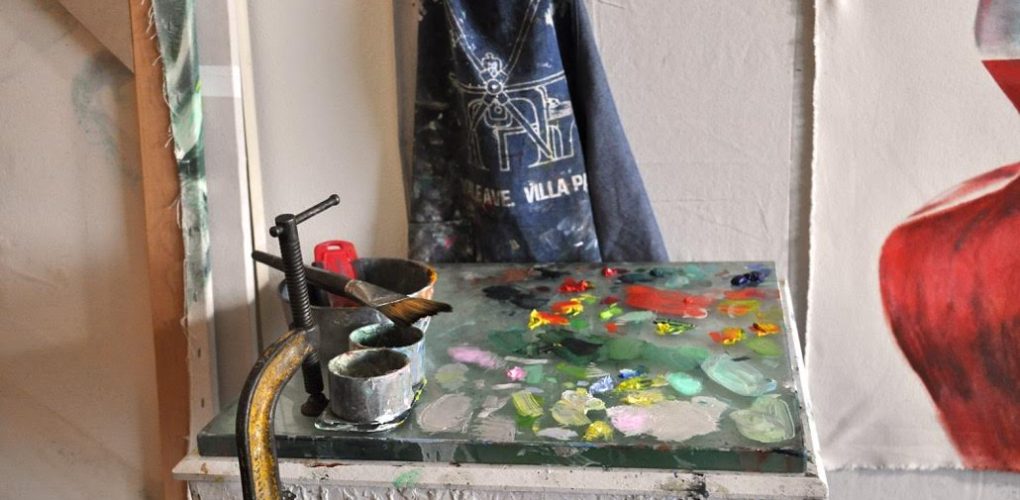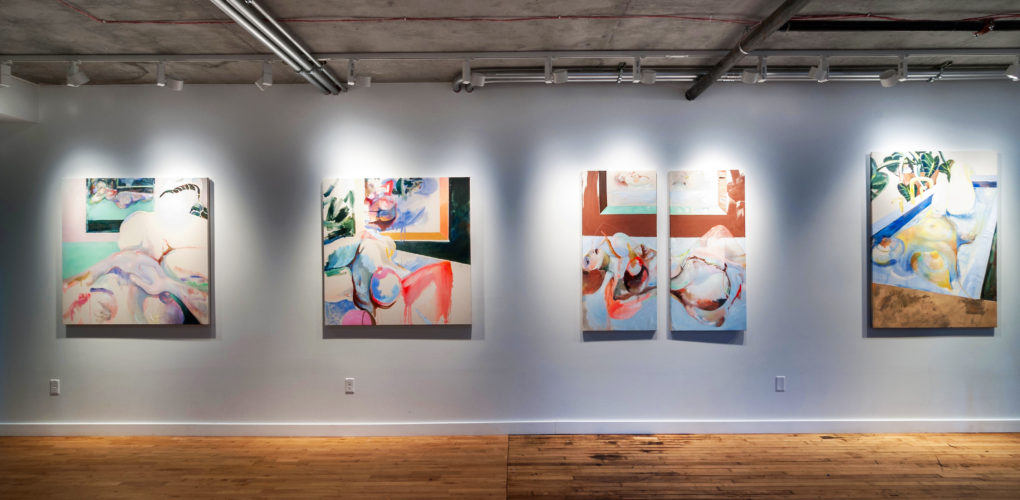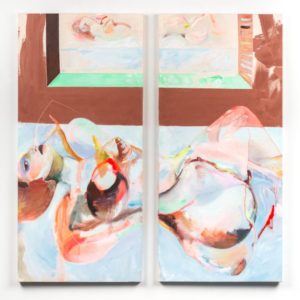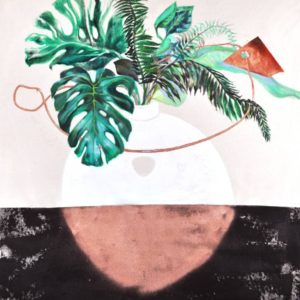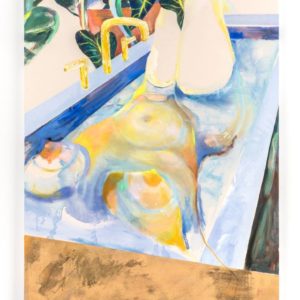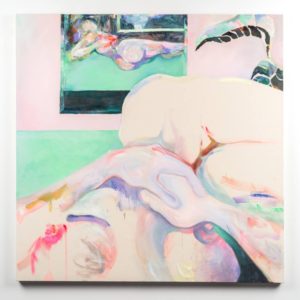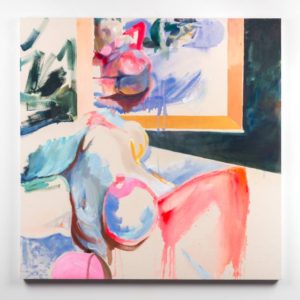One to Watch
 Hazel Miller creates an alternative gaze for the female subject
Hazel Miller creates an alternative gaze for the female subject
Hazel Miller offers a new perspective on traditional art historical practices, fueled by her interest in the way imagery has shaped her viewpoint as a woman. She pulls inspiration from art historical masters, contemporary artists, and even photos she comes across on Instagram. Though she often paints nudes and still lifes, the former a subject that is traditionally objectified by the male gaze, she instead plays with line and form to override these sexual undertones. Hazel is interested in depicting surreal and ambiguous scenes, disrupting the viewer’s experience with a blend of flatness and depth, realism and abstraction.
Hazel received a BFA in Painting and Drawing from the Pacific Northwest College of Art in Portland. She was the recipient of the Carey Award for Life Drawing in 2015 and the Voohries Drawing Award in 2014. Her works have been show in solo and group exhibitions in Portland at galleries including Blackfish Gallery, T Project, and PNCA Gallery.
What are the major themes you pursue in your work?
As I continually study, synthesize, and archive my surroundings (which include images from museums/galleries, art books, and digital media), I’m intrigued by the way visual culture shapes my perspective as a woman and artist. Thus, my central themes revolve around art itself—art history, process/practice, and aesthetics—and frequently refer to the female mind/body. I’m hell-bent on distorted figural elements, rampant foliage, and pastiches of modernist tendencies, and I am beginning to understand my fixation with offering an alternative gaze towards the female subject in art history and in my life. I love messing with the viewer’s sense of time and space, and I flirt with metacommentary.
Inviting a wide spectrum of abstraction/representation, my practice relies on playful experimentation even though my subject matter (female nudes, still lifes, interior spaces) and use of direct observation are traditional. I have fun reiterating the same subjects, focusing on different artistic elements and techniques each time. I’m intensely inspired by other artists’ work, of both now and then; currently I’m working on launching an online publication/network called P A R R O T collaborations, with the first dynasty (collection of projects) featuring all female and genderqueer artists.
My work usually has a lush, humid mood and figural/facial elements. I notice myself translating the female body into shapes, lines, and forms, perhaps exemplifying an overriding of a sexual (traditionally male) gaze into a more ambiguous—yet still appreciative—artistic gaze. The abstracted female becomes a surreal contradiction of softness/hardness and flatness/depth. I think about Matisse’s odalisques, about the sculptural tradition of the bust, about interesting female self-portraits on Instagram.
I find that if I spend enough time looking at art (including my own), staring at plants/people, and taking risks in the studio, I naturally arrive at some pretty disorienting fusions of visuals. Lately I’m obsessing over art from the 1960s/70s, from David Hockney to Kenneth Noland, mostly because of their interest in light and space. I love the palettes—earthy but bright; the compositions—bold, minimal, dynamic. I’m taking hints from René Magritte and Constantin Brancusi (a weird coupling, I know) in terms of surface texture, metacommentary, and illusionism. There’s Francis Bacon, Henri Matisse, Louise Bourgeois, Vincent Van Gogh. Equally important are the hundreds of artists whose work I come across on a daily basis in assorted media.
I find that my art continually folds onto itself, converses with other art, absorbs data, circles around itself over time, and I find that self-reflexivity authentic and entertaining.
What was the best advice given to you as an artist?
Make as much work as possible, all the while taking a lot of risks and solving problems accordingly. This advice accumulated from a few different sources; my favorite professors reinforced the overall approach, and when I stumbled across a list titled Immaculate Heart College Art Department Rules (popularized by John Cage but written by a nun, Sister Corita Kent) I immediately tacked it up in my studio, feeling like 98% on board (the minimalist in me cringes at “save everything”). I know this attitude was also inspired by My Life with Picasso by Francoise Gilot. Picasso was an atelier friend!
If I spend enough time practicing, my vision comes forward naturally. For me, practice can equal observation. My eyes are constantly studying (sometimes to the point of an obsessive habit). Furthermore, I see my field of vision as its own moving work of art that I can alter by blurring my eyes, cropping with my hands, or noticing color connections. The more time I spend in the studio, the more I carry that artistic gaze into the rest of my life. The more my daily life mirrors art, the more my studio practice reflects my field of vision.
Prefer to work with music or in silence?
I worship music! Anything from Yo-Yo Ma to Radiohead to Chance the Rapper to my partner’s in-progress solo project, J La Ræ (I get private DJ sets since we currently share a studio). I love listening to local groups like The Last Artful, Dodgr (female rapper you MUST look into) and Headwaves (my Seattle friends’ groovy new band). I love atmospheric, instrumental music, falsettos, R&B, hip hop. I also vibe out to podcasts—lately, NPR’s TED Radio Hour and Radical Personal Finance (because I’m trying to be a full-time and well-fed artist).
P.S. If you have never painted while listening to the Flower Duet from Lakmé, you should try it ASAP.
If you could only have one piece of art in your life, what would it be?
I recently learned about James Turrell’s Roden Crater project… it’s not finished yet, but I know I want to live in there. If you haven’t heard about it, scope it out immediately. I think it’s going to be one of the greatest works of the century. Seriously. Ideally I’d combine Roden Crater with some of his swimming pool collaborations. Naturally, I’d throw some Rothkos up to see how they converse with Turrell light and space. Might as well as a David Hockney and a Cecily Brown. Actually, you can just search my Instagram tag, #virtualartcollection.
In conclusion, this was the hardest question for me, and I kind of cheated by picking a piece I can live inside of and fill with more art.
Who are your favorite writers?
As far as reading goes, lately it’s been either art-related or dystopian. I’m a huge Kurt Vonnegut fan (Sirens of Titan is my favorite, followed by Breakfast of Champions and Man Without A Country). I love Brave New World by Aldous Huxley. So I’d say I’m attracted to themes of time and space, metacommentary, and utopia. I just read Hockney’s That’s the Way I See It, and I’m currently reading Denis Dutton’s The Art Instinct about beauty, pleasure and human evolution.
